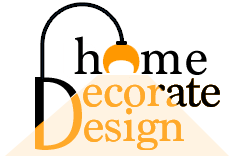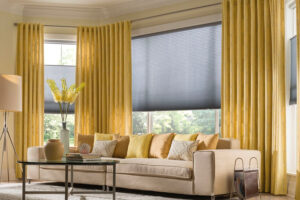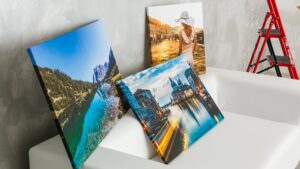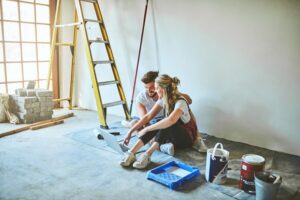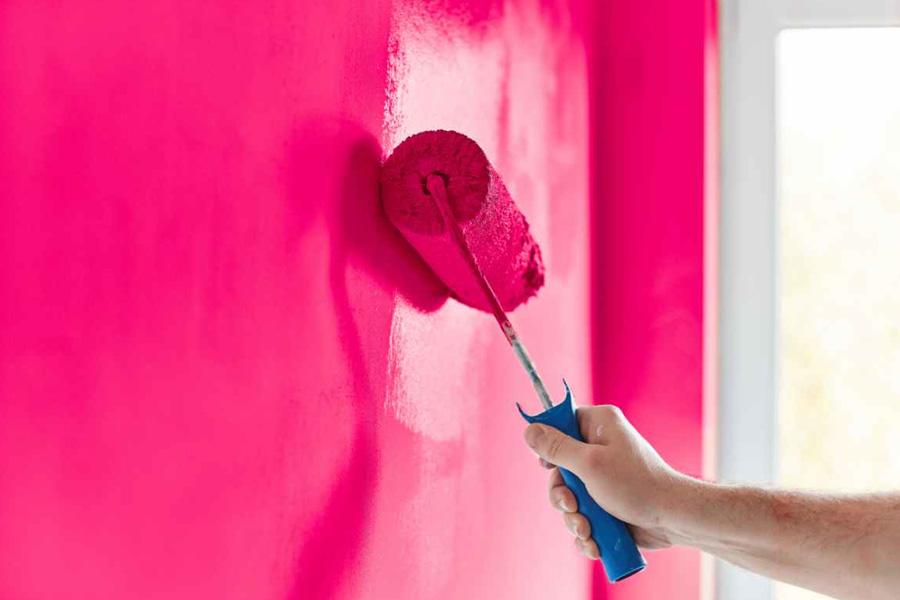
This comprehensive resource serves as an essential guide to the world of professional artistic services available throughout the United Kingdom. It explores both creative practices and commercial painting expertise for various audiences.
The practice involves applying pigments and colour to surfaces, creating visual expressions. This ancient art form continues to evolve with modern techniques and materials. Both the creative process and finished artwork hold significant value in contemporary culture.
This guide covers historical context alongside current industry practices. Readers will discover traditional methods and innovative approaches used by today’s professionals. The content addresses artistic fundamentals and practical business considerations.
This resource provides valuable insights for hobbyists, students, and established practitioners alike. It honours rich traditions while focusing on modern UK market relevance. The information supports artistic development and professional growth.
Key Takeaways
- This guide offers comprehensive coverage of artistic services in the United Kingdom
- It explores both creative practices and professional business aspects
- The resource benefits hobbyists, students, and established professionals
- Content balances historical traditions with contemporary market relevance
- Readers gain insights into materials, techniques, and commercial considerations
- The guide serves as a practical reference for artistic development
- It addresses the evolving nature of visual art practices in modern contexts
Introduction to Professional Painting Services
Navigating the realm of professional creative services in the United Kingdom requires understanding both artistic traditions and modern market dynamics. This section outlines what readers can expect from this comprehensive guide.
Overview of the Ultimate Guide
This resource provides a journey from fundamental concepts to advanced professional practices. It explores both creative artistic expression and commercial services available throughout Britain.
The guide recognises how these domains intersect and influence each other. Readers will discover traditional methods alongside contemporary innovations used by today’s professionals.
Understanding the UK Market
Britain’s rich artistic heritage has established it as a significant centre for creative innovation. The market encompasses multiple disciplines and approaches.
Professional services cater to diverse audiences including private collectors, commercial clients, and educational institutions. The sector supports thousands of artists, educators, and related businesses.
The UK market balances respect for classical traditions with enthusiasm for contemporary approaches. This creates a dynamic environment for both established and emerging creative professionals.
Professional standards and business practices have evolved to meet modern demands while maintaining artistic integrity. The creative economy remains vital and economically significant across the nation.
History and Evolution of Painting Techniques
Humanity’s relationship with visual art dates back over 51,000 years, with early creations found on cave walls across multiple continents. This remarkable timeline showcases our enduring need for visual expression.
Ancient Methods and Cultural Roots
The oldest known artworks were created using natural pigments like coloured earths and charcoal. These early artists rubbed pigments directly onto rock surfaces in locations worldwide.
Cave art emerged independently across civilisations during the Upper Paleolithic period. Examples exist from Indonesia to Europe, demonstrating a universal human impulse.
Modern Advancements in the Art
The 15th-century innovation of oil-based pigments revolutionised Western art. This created more flexible and durable materials for artists.
Later developments included synthetic pigments and acrylic polymers. The invention of photography also transformed artistic approaches, leading to new movements.
| Historical Period | Key Developments | Materials Used | Cultural Significance |
|---|---|---|---|
| Prehistoric (c. 40,000 BCE) | First pigment applications | Natural earth pigments, charcoal | Ritual and storytelling |
| Renaissance (15th century) | Oil painting techniques | Linseed oil, mineral pigments | Realism and perspective mastery |
| Modern Era (19th-20th century) | Synthetic materials, photography influence | Acrylics, synthetic pigments | Abstract and expressive movements |
| Contemporary (21st century) | Digital tools, mixed media | Digital platforms, diverse materials | Global accessibility and innovation |
The Influence of Different Artistic Mediums on Painting
From oil’s rich history to acrylic’s modern versatility, each medium offers distinct creative possibilities. The binder substance determines crucial working characteristics that shape artistic outcomes.
Exploring Oil, Acrylic, and Watercolour
Oil paint uses linseed oil as its binder, providing exceptional flexibility and extended drying times. This medium allows artists to blend colours gradually over days. The rich colour depth has made oil a preferred choice for centuries.
Acrylic paint employs synthetic polymer emulsions for rapid drying and water solubility. Artists appreciate its versatility, achieving effects from transparent washes to opaque layers. This modern medium combines convenience with permanent water resistance when dry.
Watercolour relies on water-soluble vehicles applied to absorbent paper. It creates characteristic translucent washes and luminous effects. The spontaneity and portability make it ideal for outdoor work.
| Medium | Binder | Drying Time | Key Characteristics |
|---|---|---|---|
| Oil | Linseed Oil | Days to weeks | Rich colour, blendable, traditional |
| Acrylic | Polymer Emulsion | Minutes to hours | Versatile, waterproof, modern |
| Watercolour | Gum Arabic | Minutes | Translucent, portable, spontaneous |
Understanding these properties helps artists select the ideal medium for their creative vision and practical needs.
Essential Materials for a Quality Painting Experience
The foundation of exceptional creative work begins with understanding and choosing appropriate tools and surfaces. Proper selection of these essential materials significantly impacts both the artistic process and final results.
Tools of the Trade
Brushes represent the artist’s primary implements, available in various shapes and bristle types. Each brush creates distinct marks essential for different techniques. Beyond brushes, artists use palette knives for mixing and texture creation.
Unconventional tools like sponges or fingers expand creative possibilities. The right implement depends on the artist’s intended technique and personal preference.
Choosing the Right Support
The support surface determines how paint interacts with the base material. Canvas remains popular for oil and acrylic work due to its durability and texture. Paper serves as the ideal surface for water-based mediums because of its absorbency.
Other surfaces like wood panels offer alternative characteristics for specific artistic needs. Each support provides unique working properties that influence the final artwork.
| Support Type | Best For | Key Characteristics | Considerations |
|---|---|---|---|
| Stretched Canvas | Oil & Acrylic | Durable, textured, traditional | Requires priming, portable |
| Watercolour Paper | Watercolour & Gouache | Absorbent, various textures | Different weights available |
| Wood Panel | All Mediums | Rigid, smooth surface | Heavy, requires sealing |
| Prepared Board | Acrylic & Mixed Media | Ready-to-use, versatile | Ideal for beginners |
Understanding material properties proves more valuable than purchasing expensive supplies. Artists should consider drying times, workspace limitations, and their skill level when selecting materials.
Mastering the Art of Painting
The prolific output of history’s great artists underscores a simple truth: sustained practice is the cornerstone of artistic mastery. Skill, defined as the ability to do something, is developed through repetition. Talent merely influences the rate of acquisition.
Fundamental Techniques and Best Practices
Mastery begins with a solid grasp of fundamental techniques. These include brush control, colour mixing, and understanding composition. They form the essential vocabulary for all artistic work.
Best practices involve starting with simple exercises. This builds confidence before tackling complex subjects. Establishing strong fundamentals is more valuable than rushing into advanced projects.
| Core Skill Area | Key Practice Exercise | Expected Outcome |
|---|---|---|
| Brush Control | Creating lines of varying thickness | Precision in mark-making |
| Colour Mixing | Creating a colour wheel from primaries | Understanding colour relationships |
| Tonal Values | Drawing a value scale from black to white | Ability to render light and form |
Developing Your Personal Style
A unique artistic style emerges organically through extensive practice. Artists naturally gravitate towards certain colours, subjects, and techniques. This process cannot be forced.
Experimentation is crucial. Viewing mistakes as “happy accidents” can lead to creative breakthroughs. Picasso’s vast body of work demonstrates that consistent engagement, not sporadic inspiration, defines a successful practice.
The focus should be on the length of time dedicated to the craft. This consistent work inevitably leads to improvement and the maturation of a personal style.
The Role of Colour and Tone in Artistic Expression
Much like the foundational elements of music, colour and tone serve as the essential building blocks of visual art, shaping its emotional core and aesthetic appeal. This section delves into the principles that govern their use.
Understanding Colour Theory
Colour is defined by three properties: hue, saturation, and value. Artists work with physical pigments, meaning a name like ‘blue’ covers a spectrum from phthalocyanine to ultramarine.
Colour perception is highly subjective. It carries psychological weight that varies culturally. For instance, black signifies mourning in the West, while white does in the East.
These symbolic meanings add context but are not techniques themselves. The true skill lies in manipulating hue and saturation to achieve the desired visual effect.
Emotional Impact Through Tone
Tonal value—the lightness or darkness of a colour—is crucial for creating form and depth. Mastering tone often matters more for a successful composition than hue selection.
Effective contrast between light and dark tones guides the viewer’s eye. It creates visual interest and the illusion of three-dimensional form on a flat surface.
Many professionals advise beginners to practise with black and white first. This builds a strong foundation in observing and rendering values before introducing the complexity of full colour relationships.
A Deep Dive into Oil Paint and Acrylic Paint – ND Painters
The buttery consistency of oil paint contrasts sharply with the rapid-drying nature of acrylics, creating different creative experiences. Each medium demands specific approaches to achieve optimal results.
Properties and Benefits
Oil paint offers luxurious handling with extended drying times. This allows artists to make adjustments over hours or even days. The slow drying enables superior colour blending and wet-into-wet techniques.
Different pigments dry at varying rates. Earth colours like Burnt Umber dry quickly, while Ivory Black may remain workable for days. This characteristic requires careful planning of the painting sequence.
Acrylic paint provides immediate practical benefits. It dries quickly through water evaporation and becomes water-resistant when dry. Cleanup requires only water, and there are no solvent odours.
Professional acrylics contain higher pigment loads than student-grade alternatives. This ensures better colour intensity and coverage. The versatility allows application on paper, card, or canvas surfaces.
Practical Techniques and Blending Tips
Oil painting techniques include building layers from lean to fat mixtures. This prevents cracking in finished works. The extended workability makes oils ideal for detailed portraiture requiring smooth transitions.
Acrylic blending presents challenges due to quick drying. Artists can extend working time using retarder mediums or glazing liquids. Soft gel gloss also helps achieve smoother colour transitions.
Effective acrylic application often requires using more paint than initially expected. Decisive colour placement prevents muddy results from excessive reworking. These approaches help artists master both traditional and modern painting methods.
Innovative Uses of Watercolour and Gouache
The fluid nature of watercolour and the opaque quality of gouache present artists with versatile tools for innovative artistic approaches. These water-based mediums offer distinct characteristics that appeal to both beginners and experienced practitioners.
Techniques for Beginners
Watercolour provides an accessible entry point for newcomers to the medium. A basic Cotman travel kit, quality watercolour paper, and a few brushes form the essential starting equipment.
Beginners should focus on mastering graded washes and wet-into-wet applications. These fundamental techniques create smooth transitions between colours. Preserving white paper areas maintains brightness in compositions.
The portability of watercolour makes it ideal for outdoor work. Compact kits easily transport for plein air sessions capturing landscapes and urban scenes.
Advanced Applications for Experimentation
Gouache differs significantly from traditional watercolour through its higher pigment concentration. This creates opaque, matte coverage allowing artists to work from dark to light.
Advanced practitioners explore combining both mediums. Layering transparent watercolour washes over gouache underpaintings creates dynamic effects. Incorporating salt or alcohol introduces interesting textural variations.
Experimentation with unconventional methods expands creative possibilities. Techniques like splattering, scraping, and resisting move beyond traditional controlled washes. These approaches help artists develop distinctive personal styles.
Exploring Non-Traditional Painting Techniques
Modern creators are pushing the limits of traditional methods by integrating unexpected materials and digital technologies. This expansion has redefined what constitutes artistic practice in contemporary contexts.
Mixed Media and Digital Painting
Mixed media approaches incorporate diverse elements beyond conventional pigments. Artists now use metal, plastic, sand, and natural materials like leaves and wood. These additions create textured, multidimensional works.
The practice of collage, pioneered by Cubist artists, remains influential. It involves adhering various materials to surfaces. This technique fundamentally expanded legitimate artistic techniques.
Digital painting represents another significant development. Creators use programs like Adobe Photoshop and Corel Painter. These tools offer unlimited colour palettes and instant undo capabilities. Finished digital works can be printed onto traditional canvas.
| Technique Type | Materials/Technology | Key Characteristics | Primary Advantages |
|---|---|---|---|
| Mixed Media | Found objects, textiles, natural elements | Textural complexity, dimensional depth | Tactile quality, material innovation |
| Collage | Paper, photographs, adhesive materials | Layered composition, conceptual depth | Rapid assembly, narrative potential |
| Digital Painting | Software applications, graphics tablets | Non-destructive editing, layer-based workflow | Cost-effective experimentation, digital preservation |
| Hybrid Approaches | Combination of physical and digital elements | Fluid media boundaries, contemporary relevance | Maximum creative flexibility, technological integration |
These non-traditional methods encourage experimentation. They allow artists to develop distinctive visual languages. The expansion into new techniques has enriched contemporary art significantly.
Expert Advice and Professional Insights for Beginners
Beginning any new creative pursuit involves navigating an initial period of challenge, a concept crucial for newcomers to understand. This phase is often where many aspiring creators feel discouraged. Expert guidance can make a significant difference in pushing through this stage.
Overcoming the Frustration Barrier
Josh Kaufman describes a “frustration barrier,” a time when one is acutely aware of their lack of skill. This feeling is universal in the learning process. The key is to persist through this discomfort.
Impostor syndrome is common, even when claiming the identity of an artist. Progress happens by continuing to create, not by waiting for confidence to arrive. Artistic skill is developed through dedicated practice over time.
Building Confidence in Your Art
Setting a long-term goal, like creating 100 works, removes the pressure for each piece to be perfect. This approach frames early efforts as valuable learning experiments. It encourages embracing mistakes as part of the journey.
Every artist’s unique life experiences contribute to their creative voice. Consistent work is far more important than innate talent for developing this voice. Regular practice inevitably leads to improvement and growing self-assurance.
| Common Challenge | Practical Strategy | Expected Outcome |
|---|---|---|
| Fear of Imperfect Results | Commit to a series of experimental works (e.g., 100 pieces) | Reduced performance pressure, freedom to learn |
| Comparing Skills to Others | Focus on personal progress and unique perspective | Increased self-confidence and authentic style development |
| Lack of Immediate Progress | Schedule regular, short practice sessions | Steady skill accumulation and sustained motivation |
The Impact of Technology on Modern Painting Methods
Modern artistic practice now embraces both digital and traditional approaches, expanding creative possibilities. Technology has transformed how artists create, learn, and connect with communities worldwide.
Digital Tools for Artistic Enhancement
Digital tools like Adobe Photoshop and Corel Painter allow artists to work with unlimited colours and textures. Graphics tablets and styluses recreate the tactile experience of traditional brushwork.
These programs offer significant advantages for experimentation. Artists can undo mistakes instantly and test compositions without material costs. Digital methods complement rather than replace traditional techniques.
Technology also enhances physical art creation through improved materials. Modern synthetic brushes and archival-quality mediums address health and environmental concerns.
Online Learning and Communities
Online platforms revolutionise art education by removing geographical barriers. People can access expert instruction through video courses and live workshops.
Virtual communities on social media and forums provide valuable support networks. Artists share work, receive feedback, and discuss techniques with peers globally.
This connectivity reduces the isolation traditionally associated with studio practice. It creates vibrant learning environments for artists at all skill levels.
| Aspect | Digital Methods | Traditional Methods | Integrated Approach |
|---|---|---|---|
| Creative Flexibility | Unlimited undo, layer editing | Physical texture, material interaction | Digital planning, physical execution |
| Learning Accessibility | Online tutorials, global access | Local classes, hands-on guidance | Hybrid learning models |
| Community Building | Global networks, instant sharing | Local workshops, in-person critique | Combined online and offline engagement |
| Material Considerations | No physical storage needed | Tactile quality, archival concerns | Digital reference for physical work |
Contemporary artists benefit from selecting approaches that suit their creative intentions and practical circumstances. Technology and tradition enrich each other in modern artistic practice.
Building a Home Studio for Optimal Creative Flow
A well-organised studio space can significantly enhance both the efficiency and enjoyment of artistic practice. This dedicated environment supports consistent creative work by reducing setup time and mental barriers.
The right studio setup accommodates different mediums and working styles. Even limited areas can become productive creative zones with thoughtful planning.
Lighting, Ventilation, and Workspace Organisation
Quality lighting represents the most critical element for accurate colour work. Natural north-facing light provides consistent illumination throughout the day.
Where natural light proves unavailable, daylight-balanced LED panels offer reliable alternatives. Position lighting behind and above the easel to minimise glare on the canvas surface.
Ventilation becomes essential when working with oil-based materials. Traditional solvents require either natural airflow or mechanical extraction systems.
Proper workspace organisation should accommodate specific medium requirements. Oil painters need secure storage for wet works and metal containers for solvent disposal.
A modest studio can function effectively with basic equipment. A sturdy table, angled board, and organised storage areas maintain efficient workflows.
The studio environment profoundly affects creative productivity. Comfortable, well-lit spaces make regular practice more accessible and enjoyable.
The Role of Professional Communities in Enhancing Skills
Creative development flourishes within supportive networks. Professional communities offer vital connections for artists at all career stages. These groups provide more than just technical advice.
They create environments where skills grow through shared experiences. Both independent learners and those preferring structured classes benefit from community engagement.
Networking and Mentoring with NDPainters
Organisations like NDPainters connect emerging talents with established practitioners. Mentorship relationships transfer knowledge beyond basic techniques. They include professional practices and career strategies.
Networking opens doors to exhibitions and collaborative projects. Isolated practitioners rarely access these opportunities. Success often depends on relationships within the broader art world.
Communities provide structured feedback mechanisms. Artists receive constructive criticism that self-assessment cannot offer. This identifies specific areas for improvement while validating strengths.
Regular group participation combats studio isolation. It creates accountability that encourages consistent work. People share practical information about suppliers and techniques.
The support extends beyond skill development. Communities validate artistic identities and celebrate achievements. They provide emotional encouragement during challenging phases.
This sense of belonging connects individual efforts to painting’s rich tradition. It contextualises personal growth within a larger historical continuum.
A Look at the Business Side of Professional Painting – ND Painters
Successful artistic careers require balancing creative passion with sound business management. This section examines essential commercial considerations for practitioners.
Marketing Strategies for Artists
Contemporary marketing extends beyond traditional galleries to digital platforms. Professionals maintain websites and social media presence to reach wider audiences.
Effective marketing involves clear communication of artistic vision. High-quality documentation of work helps attract potential clients and collectors.
Building an email list creates direct communication channels with interested parties. This approach supports consistent engagement with your audience.
Managing Client Expectations
Clear agreements prevent misunderstandings in commissioned projects. Contracts should outline scope, timelines, and revision policies.
Professional boundaries protect creative integrity while ensuring client satisfaction. Transparent pricing structures build trust and prevent disputes.
| Business Aspect | Key Consideration | Professional Benefit |
|---|---|---|
| Pricing Strategy | Materials, time, market position | Fair compensation, sustainability |
| Legal Protection | Contracts, copyright, insurance | Risk management, rights security |
| Income Diversification | Sales, teaching, licensing | Financial stability, growth |
| Client Relations | Communication, deliverables | Repeat business, reputation |
Tips for Maintaining Quality and Consistency in Your Art – NDPainters
Sustained artistic excellence stems from disciplined habits rather than fleeting inspiration. Masters like Picasso created tens of thousands of works, demonstrating that consistent engagement over decades defines true accomplishment.
This approach transforms creative practice from a sporadic activity into a professional discipline.
Practice Routines and Continuous Improvement
Effective routines balance focused skill exercises with complete projects. This ensures technical improvement translates into finished work. Regular practice builds momentum that carries artists through creative plateaus.
Setting specific, measurable goals provides clear direction for development. These might include weekly studies or mastering particular techniques. Such targets offer concrete progress benchmarks.
Continuous improvement requires systematic evaluation of completed art. Identify recurring limitations and research solutions through study or professional insights from groups like NDPainters. Implement new approaches and assess their effectiveness.
Quality consistency emerges from standardising fundamental processes. Maintain reliable material choices and colour palettes while allowing creative variation within these parameters. This balance supports both technical reliability and artistic exploration.
Long-term development demands patience with inevitable progress plateaus. Understand that skill acquisition involves cycles of rapid improvement, consolidation, and breakthroughs rather than linear advancement.
Integrating Creative Expression with Technical Skill
The journey from technical proficiency to authentic artistic voice represents a crucial evolution for every practitioner. This section examines how artists harmonise disciplined precision with spontaneous experimentation.
Mastering fundamental techniques provides the essential vocabulary for creative work. These skills become tools rather than constraints when properly understood.
Balancing Experimentation and Precision
Contemporary artistic practice encompasses diverse approaches from naturalistic representation to complete abstraction. Each painting serves unique purposes reflecting the creator’s vision.
The tension between technical precision and creative freedom proves productive rather than restrictive. Established principles create reliable foundations for meaningful innovation.
Artists develop judgement about when to follow conventions and when to break them. This balance shifts throughout a career as skills and confidence grow.
Key elements requiring integration include:
- Composition and narrative structures
- Gesture and abstract considerations
- Technical execution and conceptual depth
Modern art’s emphasis on concept has liberated creators from purely technical concerns. However, the most compelling work often demonstrates how technical excellence enhances conceptual sophistication.
Learning to embrace unexpected outcomes cultivates essential flexibility. Mistakes frequently reveal possibilities that systematic planning cannot anticipate.
This integration represents an ongoing negotiation rather than a final destination. The relationship between skill and expression evolves across different projects and career stages.
Conclusion
This guide’s exploration reaffirms that artistic expression through pigment application remains remarkably vital in our digital age. The creative journey spans from ancient traditions to contemporary innovations, demonstrating painting’s enduring relevance.
Professional artistic services thrive throughout the UK, supported by robust communities and cultural appreciation. This art form represents a teachable skill accessible to anyone willing to invest consistent practice time.
Success in this field depends on balancing technical proficiency with creative expression. Artists must also develop business acumen and resilience to navigate challenges.
The diverse approaches available ensure every practitioner can find methods aligned with their interests. Whether pursuing art professionally or personally, individuals join a global community engaged in rewarding creative work.
This comprehensive guide has illuminated the path from fundamental techniques to advanced practices. The medium’s ongoing evolution proves its continued significance in contemporary culture.
FAQ
What are the primary differences between oil paint and acrylic paint?
The main distinction lies in their drying times and composition. Oil paint uses a slow-drying oil medium, allowing for extended blending, while acrylic paint is water-based and dries much faster. Acrylics offer versatility and are easier to clean up, whereas oils are prized for their rich colour depth and traditional feel.
How does an artist choose the right support for their work?
Selecting the correct support—such as canvas, paper, or board—depends on the medium and the desired outcome. Heavy-bodied acrylics or oils often require a sturdy, primed canvas, while watercolour works best on specially designed, absorbent paper. The choice impacts the artwork’s longevity and final appearance.
What is colour theory and why is it important for painters?
Colour theory is a framework that guides the use of colour in art. It helps artists understand how colours interact, mix, and influence the emotional tone of a piece. Mastering it is crucial for creating harmony, contrast, and the desired mood in a painting.
Can you explain the significance of brush selection in painting?
The brush is a fundamental tool that directly affects the application of pigment and the style of the work. Different shapes and bristle types—such as sable for watercolour or hog hair for oils—allow for varied strokes, from fine detail to broad washes, making brush choice integral to the artist’s technique.
What are some best practices for building a personal artistic style?
Developing a unique style involves consistent practice, studying various artists, and experimentation. It is a gradual process where one learns which subjects, colour palettes, and techniques resonate most personally. Authenticity emerges from continually creating work that reflects one’s individual perspective and interests.
How has technology influenced contemporary painting methods?
Technology has introduced digital tools for planning compositions and colour schemes, alongside online platforms for learning and community engagement. While traditional skills remain vital, these innovations offer new ways to enhance creativity, share work, and connect with other artists globally.
